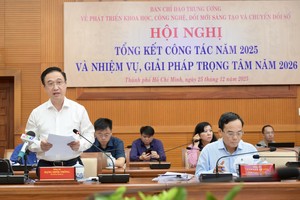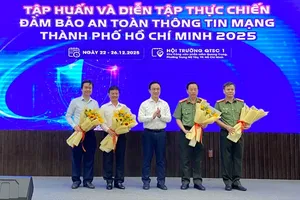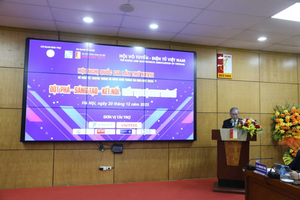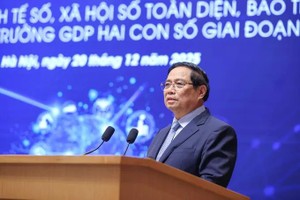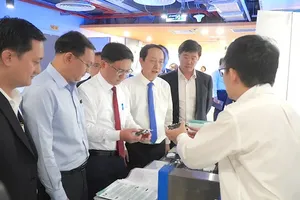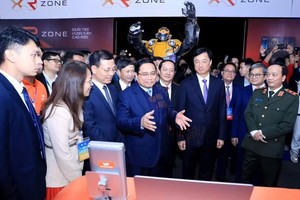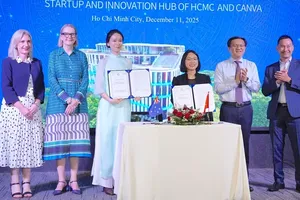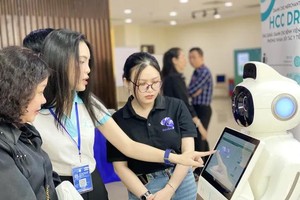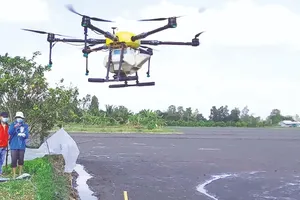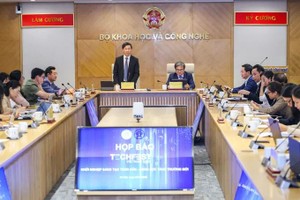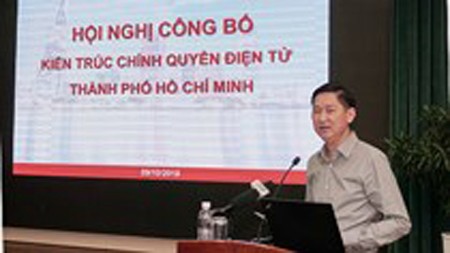
This is the overall plan to ensure the unity in implementing information technology among state offices of the city in order to avoid financial waste as well as repetition while till meeting the strategic demands for building a smart urban area and the practical needs of residents, businesses. It is also used to exploit the growing popularity of new technologies in Industry 4.0 such as Internet of Things (IoT), Big Data, Artificial Intelligence, Blockchain, Virtual Assistance (chatbot), or Robot.
As said by Ms. Vo Thi Trung Trinh, Deputy Director of the HCMC Department of Information and Communications, the official e-government structure is developed in accordance with the frame of the Vietnamese e-government, taking into consideration the project to transform HCMC into a smart city in the period from 2017 – 2020, with a vision to 2025. It also aims at constructing a digital government to operate and manage the to-be smart city.
Therefore, the new structure is supposed to gradually improve and upgrade public administrative services via focusing more on citizens and businesses. Also, thanks to the sharing feature and the use of open-sourced code, the new database is expected to optimize the connection and use. The new structure is interoperable in the national as well as local levels, convenient for the application of the digital one-stop service of the city.
Ms. Vo Thi Trung Trinh also said that since 2010, the city has already concentrated on building this kind of service in many online administrative procedures. From 2018, the new target will be the access of e-government on mobile devices and the implementation of level-4 public services with higher interaction.
It is predicted that in 2020, the tasks of document management and digital operations in relation with Decision No. 28 and 61 of the Prime Minister will be basically completed. The shared database on citizens, businesses, and digital maps will be formed.
From 2020 to 2025, HCMC will begin the task of developing a smart e-government based on the technologies of Big Data, open databases, Artificial Intelligence, Cloud Computing while taking full advantage of social networks to provide public services for residents and companies in need.
After 2025, the construction of the e-government will focus more on personalization when most public services are automatically carried out via the interactions among computers.
In the announcement meeting Vice Chairman of the HCMC People’s Committee Tran Vinh Tuyen asked that related departments, agencies, and local state offices of all levels, regardless of geographic locations, increase the use of information technology into managing local tasks based on the new e-government structure. He said that the use of the e-government is to aid residents to use necessary services without the excessive need to move around.
Accordingly, the Vice Chairman requested that the HCMC Department of Information and Communications quickly introduced regulations and policies to guide and monitor the implementation of the e-government structure in different levels, to publish the new structure in various media channels so that people who are interested in the shared database are able to understand and apply it easily while businesses can offer corresponding technological solutions.
Simultaneously, the Department has to cooperate with consultation teams to update the structure annually, along with the introduction of feasible solutions or models for local areas to follow. It should also collaborate with the HCMC Department of Planning and Investment on proposing practical suggestions for the investment procedures of related projects in accordance with the Investment Law.


